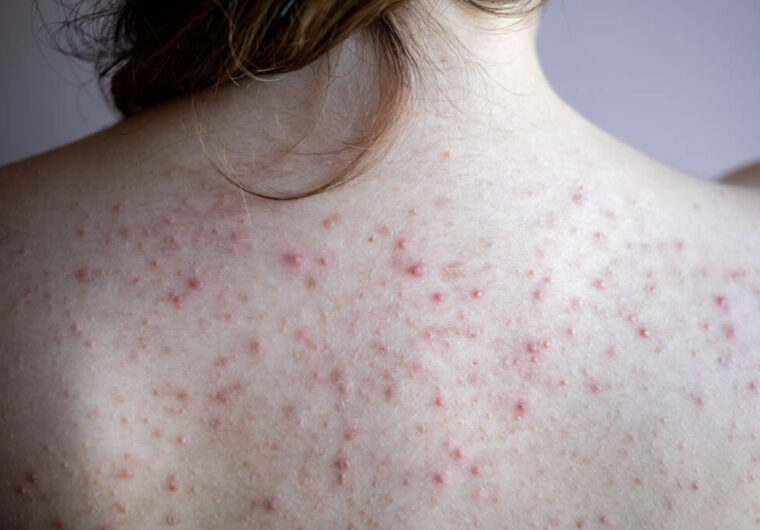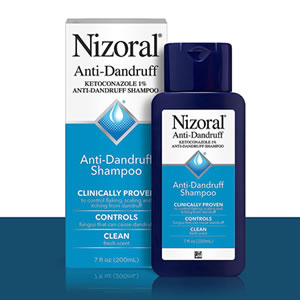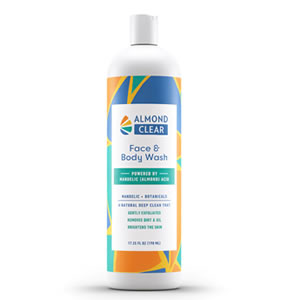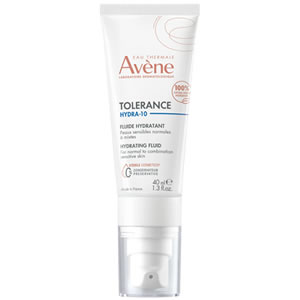
Table Of Contents
- A Quick Glimpse of 5 Best Products for Fungal Acne on Back
- Understand Fungal Acne
- Causes of Fungal Acne
- Identify the Symptoms of Fungal Acne breakouts
- How is Fungal Acne Treated?
- What to Look for in a Fungal Acne Product
- Must-Have Products for Clear, Healthy Skin
- Nizoral Anti-Dandruff Shampoo
- Paula’s Choice 10% Niacinamide Booster
- Neutrogena Body Clear Oil-Free Body Acne Wash
- Almond Clear Face and Body Wash
- Avene – Tolerance HYDRA-10 Hydrating Fluid (Moisturizer)
- Frequently Asked Questions
- Final Verdict
Being acne-prone can be quite a stressful and frustrating experience. While some may think that acne is only limited to the face, the reality is that acne can occur on any part of the body, including the back. One of the worst forms of back acne is fungal acne, which can take time and effort to get rid of.
If left untreated, fungal acne can cause further irritation and inflammation, adding to the discomfort and stress it already causes.
Using typical acne solutions can cause more harm than good, leading to further flare-ups and wasted money. But do not worry; we’ve got some expert-approved treatments that can banish fungal acne for good.
We’ve gathered some of the best products to combat this skin condition and keep your skin clear and radiant. Whether you’re dealing with stubborn breakouts or want to be proactive in preventing them, we’ve got you covered with the right solutions to treat fungal acne.
A Quick Glimpse of 5 Best Products for Fungal Acne on Back
Best Gentle formula for fungal acne – Almond Clear Face and Body Wash
Solid Face & Body Moisturizing – Avene – Tolerance HYDRA-10 Hydrating Fluid
Best OTC – Nizoral Anti-Dandruff Shampoo
Best Lightweight formula – Paula’s Choice 10% Niacinamide Booster
Best Exfoliating and acne clearing – Neutrogena Body Clear Oil-Free Body Acne Wash
Understand Fungal Acne
Fungal acne — also known as Malassezia folliculitis or Pityrosporum folliculitis— is often confused with bacterial acne or hormonal acne, but it’s quite different.
Unlike acne, caused by bacteria, this condition is caused by an overgrowth of a common type of yeast called Malassezia.
This type of yeast usually lives on our skin without causing any harm. Still, when there’s an overgrowth of it due to factors such as humidity, excessive oiliness, or impaired immune functions, it can lead to those pesky pus filled bumps commonly mistaken for regular acne.
Fungal acne is also unique because it’s often accompanied by intense itching and can appear on the back, chest, or trunk. Furthermore, studies suggest that the occurrence of acne caused by this specific yeast is more probable during warmer weather. [1 , 2 ]
If you’re still wondering why your acne treatments aren’t working, you might be dealing with fungal acne, not regular acne.
So, be careful while choosing your treatments, and use our ingredient checker to help you comb through and inspect your products for ingredients that might exacerbate this skin condition.
Causes of Fungal Acne
Ever wondered why and what causes fungal acne? Just like regular acne, there are various reasons why it might crop up on your skin. Check out some of the most common causes below:
Medications:
Some medications can disrupt the bacterial balance within your body, promoting the growth of fungal acne. As an example, antibiotics (either topical or systemic) can deplete bacteria on your skin, allowing yeast to thrive unchecked.
Fashion Mistakes:
Sporting tight, non-breathable clothing or wearing sweaty workout clothes creates a moist environment where yeast can flourish, leading to unwanted fungal acne.
Genetics:
Some individuals are genetically predisposed to overgrowths of yeast, causing fungal acne to appear more frequently.
Medical conditions:
Diabetes and HIV, among other chronic medical conditions, can weaken the immune system, leaving your skin more susceptible to fungal acne.
So it’s essential to keep an eye on your health and consult a professional if you suspect any underlying medical conditions.
Identify the Symptoms of Fungal Acne breakouts
Here are some of the symptoms:
- Clusters of small red bumps
- Very itchy skin
- Spots on your chest, back, neck, arms, or face
- Unresponsive acne
- Irritated hair follicles
How is Fungal Acne Treated?
If you’re one of the many people who experience fungal acne, you’re not alone. This common skin condition can be frustrating to deal with, but the good news is that effective fungal acne treatments are available.
The first step is to consult with a board-certified dermatologist. A medical professional can diagnose the condition you are experiencing and suggest a plan for treatment tailored to your specific needs.
Some common topical treatments include topical antifungal medications, oral medications, and lifestyle changes like avoiding certain cosmetics and keeping the affected skin clean and dry.
With the right treatment plan, you can get your fungal acne under control and enjoy clear, healthy skin once again.
What to Look for in a Fungal Acne Product
When it comes to product selection, there are several important factors to consider in order to ensure that you’re getting the most effective fungal acne treatment possible. Here’s what to look for:
Antifungal ingredients:
This is the most crucial factor when choosing a product for fungal acne. Look for active ingredients such as ketoconazole, pyrithione zinc, or tea tree oil, all effective at treating this yeast infection.
Non-comedogenic:
It’s important that any products you use on your skin don’t clog your pores and make matters worse! So always go for non-comedogenic options that won’t exacerbate acne symptoms.
Gentle yet effective:
It’s important to choose gentle skincare products that effectively combat the fungus without irritating your sensitive skin.
Avoid harsh scrubs or exfoliants and instead choose mild cleansers and moisturizers formulated with soothing ingredients like panthenol, chamomile extract, or mandelic acid.
Oil-free:
As mentioned earlier, Malassezia grows well in oily environments, so it’s crucial to use oil-free skincare products to avoid feeding fungal infection that’s happening in the hair follicles.
Dermatologist-recommended brands:
When in doubt, consult an expert. Opting for dermatologist-recommended brands will give you peace of mind, knowing that they’ve been tested by professionals who understand how these conditions work.
By keeping these factors in mind while shopping around, you can find the best product suited specifically towards combating fungal acne effectively without causing further irritation, leading to clear, healthy-looking skin over time.
Must-Have Products for Clear, Healthy Skin
Nizoral Anti-Dandruff Shampoo
You’re probably wondering how anti-dandruff shampoo ties into fungal acne.
Hear us out: dermatologists are keen on using over-the-counter options like this because they’re a first-line defense for mild cases of fungal acne.
And this particular shampoo has an all-star ingredient: 1 percent ketoconazole, a serious fungus fighter.
Forget the word “shampoo” here; you’ll use Nizoral as a body wash. And let us tell you, it’s an outstanding anti-fungal agent that’ll help you eliminate that pesky fungal acne.
Plus, Ketoconazole is a highly potent and efficient ingredient that can effectively eradicate body and scalp fungus. It is a broad-spectrum antifungal agent that is ten times more powerful than other similar agents. [3 , 4 ]
To achieve the best results, use this powerhouse shampoo twice weekly when the bumps are active.
Once they’re gone, use it once a week or every other week to maintain that clear complexion.
And remember, allow the shampoo to tingle for 3-5 minutes before rinsing it off thoroughly.
Pros:
- Long-lasting relief
- Strong anti-fungal ingredients
- Controls itching and flaking
Cons:
- Can be drying, so be sure to moisturize
Paula’s Choice 10% Niacinamide Booster
Do you struggle with large pores, dark spots, or irritated skin? Fear not! The skincare experts at Paula’s Choice have created a powerful solution just for you.
Say hello to their 10% Niacinamide Booster, a unique multi-tasking skincare essential.
Formulated with Vitamin B3, antioxidants, and skin-replenishing plant extracts, this booster is specially designed to reduce the appearance of roughness, dryness, and redness.
Plus, it brightens and evens your skin tone, giving you that youthful radiance you’ve wanted.
And with no parabens, fluff, or fragrance, you can trust that you’re getting only the best ingredients.
Not sure how to use it? No problem. Simply apply a few drops to your moisturizer twice daily, and you’re good to go.
Pros:
- Improves the skin’s texture
- Suitable for all skin types
- Reduces dark spots
- Shrinks large pores
Cons:
- Niacinamide in high concentrations may irritate sensitive skin
Neutrogena Body Clear Oil-Free Body Acne Wash
Looking for an effective solution to combat back acne? Try Neutrogena Body Clear Oil-Free Body Acne Wash! It targets acne without drying out your skin, thanks to its nourishing ingredients.
While this product is not an antifungal body wash, salicylic acid is a powerful acne-fighting ingredient that can help unclog pores and prevent future breakouts. The 2% salicylic acid concentration eliminates dead skin cells from applied antifungal treatments, which improves the clarity and texture of the skin.
The formula also includes aloe extract for soothing properties and two types of chamomile extract for noticeable inflammation reduction. The formula is gentle on the skin, making it an effective solution for those struggling with acne-prone skin.
Pros:
- Oil-free
- Non-comedogenic
- Exfoliates
- Fight breakouts without aggravating fungal acne
- Soothing plant extracts
Cons:
- Not for extremely sensitive skin
- Those with Salicylate allergies should not use this product
Almond Clear Face and Body Wash
Almond Clear Face and Body Wash is a powerful solution to combat fungal acne on your back. Formulated with Mandelic Acid, Green Tea, and Witch Hazel, this product offers numerous benefits.
If you’re struggling with fungal acne on your face or back and you also have sensitive skin, this antifungal body wash is an excellent option for you.
With its powerful yet gentle formula, this product is sure to leave your skin feeling refreshed and rejuvenated.
Mandelic Acid is a gentle exfoliator that effectively combats acne without causing irritation or dryness. Green Tea’s high antioxidant contents helps soothe and calm inflamed skin, while witch hazel, a natural astringent, helps to tighten pores and reduce inflammation.
Pros:
- Gently exfoliates
- Combats hyperpigmentation and dull skin
- Non-comedogenic
- Oil-free
- Combats acne and fungal acne
- Combat ingrown hairs
- Antioxidant-rich
Cons:
- Those with nut allergies should not use this product
Avene – Tolerance HYDRA-10 Hydrating Fluid (Moisturizer)
The Avene – Tolerance HYDRA-10 Hydrating Fluid is a potent solution for acne-related back irritation.
Made with 100% Natural Hyaluronic Acid and Avene Thermal Spring Water, it provides long-lasting hydration and nourishment without irritation or clogging pores.
The lightweight formula makes it easy to apply and quickly absorbs into the skin, leaving it feeling soft, supple, and refreshed.
Rich in minerals, Avene Thermal Spring Water soothes inflamed skin, while High-Weight Hyaluronic Acid provides intense hydration to improve skin elasticity and texture.
This moisturizer is minimalistic, free of oil, parabens, and fragrances, and is perfect for sensitive skin, making it an excellent choice for maintaining healthy, hydrated skin anywhere on your body.
Pros:
- Intense 48 hours of hydration
- Sterile cosmetic (No preservative required)
- Oil-free
- Fragrance-free
- 100% natural, patent-pending formula
- Respects the skin’s microbiome
Cons:
- Shipping time is slow. Order in advance
Frequently Asked Questions
Is fungal acne contagious?
Fungal acne (Malassezia folliculitis) is not contagious in the traditional sense since it is caused by an overgrowth of fungi on the skin rather than a contagious virus or bacteria. [5]
It is essential to keep in mind that Malassezia is a natural component of every individual’s skin. Therefore, the idea that this skin condition spreads through skin-to-skin contact may be inaccurate since it is already present on your skin.
However, if you already have fungal acne, please be aware that it can spread through contact with contaminated objects or through self-inoculation to other areas of your body.
As a result, if you touch a place on your skin that has fungal acne and then touch another area where the skin is vulnerable, there is a chance you could spread the infection. This is particularly true if you take antibiotics frequently or have a weakened immune system.
Therefore, it is important to wash your hands carefully or use a fresh towel to avoid transferring the fungus to other parts of your body.
It is also possible to develop fungal acne from using contaminated makeup brushes or sharing personal care items with someone who has fungal acne.
To prevent the spread of fungal acne, it is important to maintain good hygiene practices and avoid sharing towels, clothing, and razors with others.
If you suspect that you have fungal acne, it is best to consult with a dermatologist for proper diagnosis and treatment.
How long does it take for anti-fungal products to work on fungal acne on the back?
The time it takes to see results can vary depending on the severity of your condition and how consistently you use the product. It’s best to give them a few weeks before expecting significant improvement.
Is it common for fungal acne to recur?
The condition may return even after successful treatment with topical or oral antifungal medication. However, changing your hygiene routine and using weekly topical solutions such as an antifungal shampoo can help prevent fungal acne from recurring in the future.
Final Verdict
All in all, fungal acne doesn’t have to rule your life; plenty of methods exist to manage it.
Additionally, there are several over-the-counter products and prescription medications available online that you can try to help alleviate the itchiness, redness, and overall impairment.
Lastly, if none of those antifungal treatments seem effective, it’s best to consult a dermatologist for advice and treatment plans. Life with fungal acne doesn’t have to be limited or uncomfortable—plenty can be done about it with the proper knowledge and guidance.
- Bulmer, A.C., Bulmer, G.S. The antifungal action of dandruff shampoos. Mycopathologia 147, 63–65 (1999). https://doi.org/10.1023/A:1007132830164
- Bulmer AC, Bulmer GS. The antifungal action of dandruff shampoos. Mycopathologia. 1999;147(2):63-5. doi: 10.1023/a:1007132830164. PMID: 10967964.
- Sinawe H, Casadesus D. Ketoconazole. [Updated 2022 Jun 27]. In: StatPearls [Internet]. Treasure Island (FL): StatPearls Publishing; 2023 Jan-. Available from: https://www.ncbi.nlm.nih.gov/books/NBK559221/
- Vest BE, Krauland K. Malassezia Furfur. [Updated 2023 May 22]. In: StatPearls [Internet]. Treasure Island (FL): StatPearls Publishing; 2023 Jan-. Available from: https://www.ncbi.nlm.nih.gov/books/NBK553091/
More Content
- Is Benzoyl Peroxide Good for Fungal Acne?
- The Power of Sulfur for Fungal Acne
- Head And Shoulders Anti-Dandruff Shampoo for Fungal Acne: Does it Work?
- Top-Rated Benzoyl Peroxide Face Wash for Acne
- Moisturizer Alternatives to Avene Tolerance Extreme Emulsion
- Forehead Fungal Acne
- 18 SunScreens for Fungal Acne
- Fungal Acne-Safe Toners Your Skin Will Love
- The Best Products for Fungal Acne
- Malezia Skincare: A Game-changer for Fungal Acne





